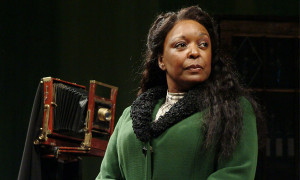Black History Month: Sarah Breedlove – The First African-American Millionaire
 Sarah Breedlove was born on 23rd December 1867 to Mr. and Mrs. Owen and Minerva Breedlove in a little village in Madison Parish found in Delta, Louisiana. At these ages, slavery was still the norm, and both of her parents and older siblings were working as slaves on the Madison Parish plantation owned by one Robert W. Burney (according to the Madison Parish census of 1850). Luckily for Sarah she was the first child in the Breedlove family to be born after the signing of the Emancipation Proclamation.
Sarah Breedlove was born on 23rd December 1867 to Mr. and Mrs. Owen and Minerva Breedlove in a little village in Madison Parish found in Delta, Louisiana. At these ages, slavery was still the norm, and both of her parents and older siblings were working as slaves on the Madison Parish plantation owned by one Robert W. Burney (according to the Madison Parish census of 1850). Luckily for Sarah she was the first child in the Breedlove family to be born after the signing of the Emancipation Proclamation.
Sarah’s mother died in 1872, and shortly afterwards her father followed both falling victim to the Yellow Fever. When Sarah was 10 years old, she and her elder sister Louvenia and brother in law Willie Powell relocated to Vicksburg in a bid to run away from the fever epidemic as well as finding a job. The two sisters found work as maids, and Sarah lived with her sister and her husband. However it is said that her sister’s husband was a cruel man who abused Sarah. Hence Sarah was more than eager to leave her sister’s house and decided to get married at the tender age of 14 years to Moses McWilliams. In those ages it was normal for young girls to get married at such tender age. Her marriage gave forth her daughter Lelia Walker (A’Lelia Walker). Sadly Sarah lost her husband McWilliams when her daughter was just 2 years old to murder. This left Sarah as a widow and a single parent at the age of 20.
Mrs. Sarah McWilliams decided to get married the second time on the August of 1894 at the age of 26. She married John Davis, but their marriage was quite rocky lasting less than a decade. After her divorce from her second husband, Sarah and her daughter Lelia relocated to St. Louis, Missouri where her brothers lived, to begin a new life there. She found a daytime working as a laundress, and attended night school. She got a break in life in 1905, and her life changed dramatically for the better. In this year, Sarah invented a Hair Straightening process for the Africans Americans’ hair. This process entailed using combs, brushes and heat and this invention would quickly become popular across North America. It was during this time, that she met Charles Joseph Walker, who worked as a newspaper advertising salesman. The two fell in love and got married in 1906, and Sarah changed her name to Madame C.J. Walker in marketing her invention. Unfortunately her 3rd marriage lasted for four year.
But before her divorce to Mr. Charles Walker, Madame C.J. Walker (Sarah’s new name) opened up a business office in Denver. She traveled with her husband far and wide to market her product while leaving her daughter Lelia to handle all the mail-orders of the business back at home. In 1908, Madame Walker opened up a training school for beauticians in Pittsburgh and she was in charge of it for the next two years. She called her school the “Lelia College for Walker Hair Culturists”, this college was teaching women on how to be “Walker Agents” and thus enable them to sell the Walker’s hair care products from door-to-door across North America. In 1910, Madame Walker is said to have had over a thousand women on her payroll, all employed as sales agents. Madame Walker decided to relocate her company’s headquarters to Indianapolis, Indiana although she was still very successful in St. Louis Missouri, but the relocation was a strategic business move to increase her productivity. Indeed her relocation to Indianapolis made her business experience unprecedented booming.
She also started giving lectures on the economics, political and social affairs at various conventions sponsored by powerful black institutions of the time. After the East St. Louis Race Riot, Madame Walker joined other leaders of the National Association for the Advancement of Colored People (NAACP) and together they championed the legislation that made lynching a federal crime. Madame Walker’s business got a whole new level of success by her relocation to Indianapolis and by the year 1914, when Madame Walker was 47 years old, she officially became the first African American to become a millionaire. This gave her respect and acknowledgement from people of all back grounds and races. In the year 1918 at a biennial convention of the National Association of Colored Women (NACW), she was given distinguished recognition for having made the biggest contribution that saved the Anacostia (Washington, DC) house of abolitionist Frederick Douglass. Her contribution of monetary support to the NAACP, YMCA, black schools, individuals, orphanages, organization and retirement homes continued throughout her career.
She decided to relocate to Invington-on-Hudson, New York in 1917 to the Villa Lewaro estate that was designed by Vertner Tandy, who was the first black architect to be licensed in the State of New York and he was the founding member of the Alpha Phi Alpha fraternity. Madame Walker’s house cost $250,000 to build; she died at her Villa Lewaro on the Sunday of May 25th 1919 from hypertension complications at the age of 51. At her death, she was paid much tribute for being the wealthiest African-American woman in North America and was the first self-made American woman to become a millionaire. After her death A’Lelia Walker took over Madam C.J Walker Manufacturing Company as the president.



